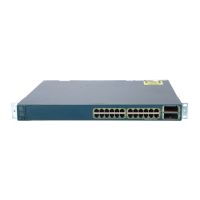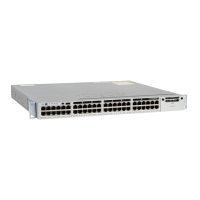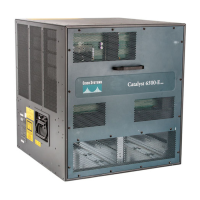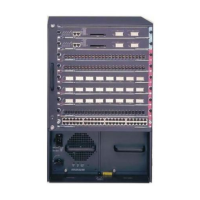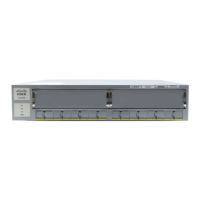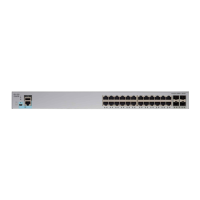7-2
Catalyst 3560 Switch Software Configuration Guide
78-16156-01
Chapter 7 Configuring SDM Templates
Configuring the Switch SDM Template
The first eight rows in the tables (unicast MAC addresses through security ACEs) represent approximate
hardware boundaries set when a template is selected. If a section of a hardware resource is full, all
processing overflow is sent to the CPU, seriously impacting switch performance. The last row is a
guideline used to calculate hardware resource consumption related to the number of Layer 2 VLANs on
the switch.
Configuring the Switch SDM Template
This section describes how to configure the SDM template to be used on the switch. This section contains
this configuration information:
• Default SDM Template, page 7-2
• SDM Template Configuration Guidelines, page 7-2
• Setting the SDM Template, page 7-3
Default SDM Template
The default template is the default desktop template.
SDM Template Configuration Guidelines
You must reload the switch for the configuration to take effect.
Use the sdm prefer vlan global configuration command only on switches intended for Layer 2 switching
with no routing. When you use the VLAN template, no system resources are reserved for routing entries,
and any routing is done through software. This overloads the CPU and severely degrades routing
performance.
Do not use the routing template if you do not have routing enabled on your switch. The sdm prefer
routing global configuration command prevents other features from using the memory allocated to
unicast routing in the routing template.
Unicast routes 8 K 11 K 0
• Directly connected hosts 6 K 3 K 0
• Indirect routes 2 K 8 K 0
Policy-based routing ACEs 0 512 0
QoS classification ACEs 512 512 512
Security ACEs 1 K 1 K 1 K
Layer 2 VLANs 1 K 1 K 1 K
Table 7-1 Approximate Number of Feature Resources Allowed by Each Template (continued)
Resource Default Routing VLAN
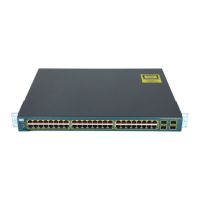
